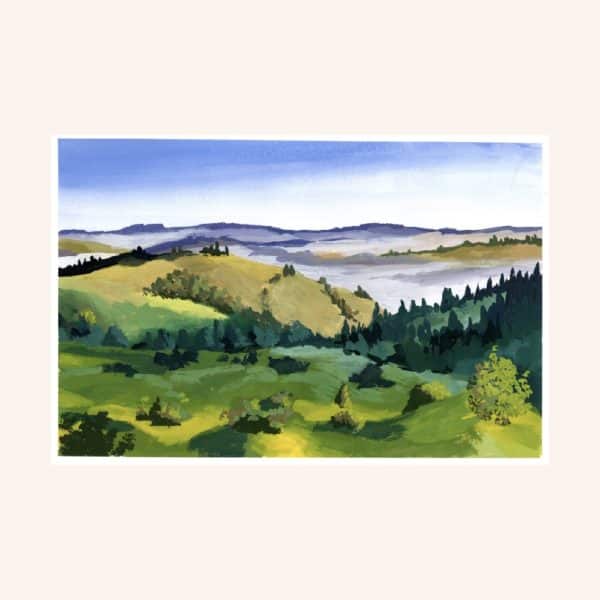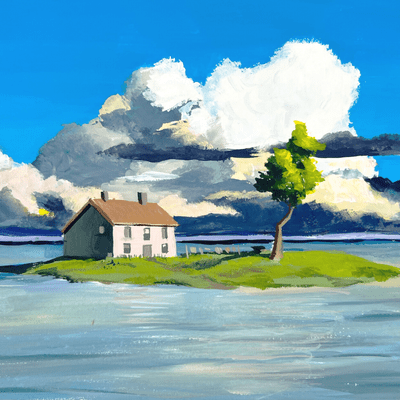Mastering Gouache Landscape Painting: Essential Techniques and Tips
There’s something truly enchanting about painting landscapes, especially when the magic of gouache comes into play. Its rich pigmentation and buttery texture never cease to dazzle me. However, mastering gouache landscape painting is an art unto itself. It requires practice, understanding key painting techniques, perfecting the art of composition, and, most importantly, developing your distinct stylistic voice.
Essential Techniques for Gouache Landscape Painting
Exploring Gouache Painting Techniques
Layering Techniques for Creating Depth
One of the standout attributes of gouache that makes it a preferred choice for many artists is its incredible layering potential. Layering allows you to add depth and dimension to your artwork. It’s like sculpting the scene on your canvas, starting with broader strokes on the first layer and gradually building up to the finer details.
Begin with a diluted wash for the first layer, and increase the consistency as you go. Allow each layer to dry thoroughly before proceeding to the next, or you’ll get muddy colors. Apply your paint with single brushstrokes without rubbing the paint below. This creates distinct and bold depth that gives your landscape a realistic perspective.

Wet-on-Wet Technique for Seamless Blending
The wet-on-wet technique involves applying wet paint onto a wet surface to facilitate seamless color blending. Gouache retains its vibrant colors even when diluted, making it well-suited for this technique. This is especially useful in painting skies, creating gradients, or depicting reflective surfaces like water bodies.
Remember, timing is everything with the wet-on-wet technique. Work fast but gently, allowing the colors to gently run into each other, resulting in a beautiful, dreamy gradient.

Dry Brush Technique for Texture and Detail
The dry brush technique works wonders to bring about the rugged texture of rocks, the fine details of tree barks, or the delicate ripples on a water surface. Using a relatively dry brush and less water creates strokes that reveal a bit of the underlying layer, creating an artistic texture. Experiment with varied pressure levels and brush types to achieve diverse effects. This works well with flat brushes and thick paint straight from the tube.

Choosing the Right Materials
Selecting Quality Gouache Paints
Not all gouache paints are created equal. While it’s tempting to skimp on expenses when starting, investing in quality supplies can significantly improve your artistic experience and work outcome.
Opt for gouache paints, known for their high pigmentation and smooth consistency. As for brushes, a selection of round, flat, in various sizes should suffice for starters. Synthetic brushes work well with gouache due to their durability and the control they offer. Learn more about my favorite gouache supplies.
Recommended Paper Surfaces for Gouache Landscape Painting
The secret to a successful gouache landscape painting often lies in the choice of paper. Gouache works best on heavy-weight, watercolor-friendly paper, as it can hold multiple layers and handle water well, preventing distortion or tearing.
Additional Tools and Accessories for Enhancing Your Work
Beyond paints, brushes, and papers, additional tools can enhance your work’s quality. An airtight palette can help you keep your paint fresh and creamy, especially in plein air. A sprayer with tap water is handy, too, for rehydrating your paint on the palette or to mist on your painting to give a mist effect.
Composition and Planning
Understanding the Rule of Thirds and Leading Lines
Planning a harmonious composition is key to creating a captivating landscape painting. ‘Rule of Thirds’ is a basic guideline – imagine dividing your canvas into nine equal parts using two equally spaced horizontal and vertical lines.
Positioning your points of interest along these lines or at their intersections can result in a balanced and engaging composition.
‘Leading lines’ guide a viewer’s eye across the painting. These lines can be any form – roads, rivers, shadows, or lines formed by treetops. They typically start from the bottom of the painting and lead toward your focal point.

Creating a Focal Point in Your Landscape
A focal point attracts immediate viewer attention. It could be a particularly bright-colored object, a structure, a light source, or a unique element in the scene. Wisely chosen, this focal point can add narrative and interest to your painting.
Tips for Capturing Light and Shadows in Gouache
Light and shadows are crucial in adding volume and depth to your painting. Pay close attention to your light source and how it impacts different landscape elements, creating highlights and shadows.
Use gouache’s excellent opacity to your advantage. Start with lighter colors and layer darker ones for deep shadows.

Tips for Successful Gouache Landscape Painting
Maintaining a Consistent Color Palette
A consistent color palette adds visual harmony to your painting. Select a few principal colors and create variations by mixing these instead of introducing too many different hues. This will give your painting a unified look. Use the color wheel to determine your color palette.
Experimenting with Different Brushstrokes and Mark Making
Using varied brush strokes and marks can make your painting more dynamic and interesting. Each artist’s mark-making and brush strokes are unique, adding personality to their work. Feel free to experiment and find what represents you.
For example, fan brushes are perfect for leaves and palm trees, while round brushes will be more versatile.

Embracing Mistakes and Learning from Them
Art, just like life, is all about learning and growing from our mistakes. If something isn’t working, step back, evaluate, learn, and continue painting. Remember that each artwork becomes a stepping stone toward becoming a better artist. If you’re still new to painting, start with a simple landscape.
Conclusion
Gouache landscape painting is a journey of exploration, learning, and personal growth. We’ve walked through vital techniques to layer, blend, and add texture, select quality materials, plan your composition, and capture light and shadows successfully. We’ve also explored maintaining a harmonious color palette, experimenting with brush strokes, and learning from mistakes.
As you step into gouache landscape painting and start experimenting with these tips, remember – you’re here to express yourself, enjoy the process, and create something uniquely yours.
If you want to dive deeper into the world of gouache landscapes, I have a complete class with step-by-step instructions.






